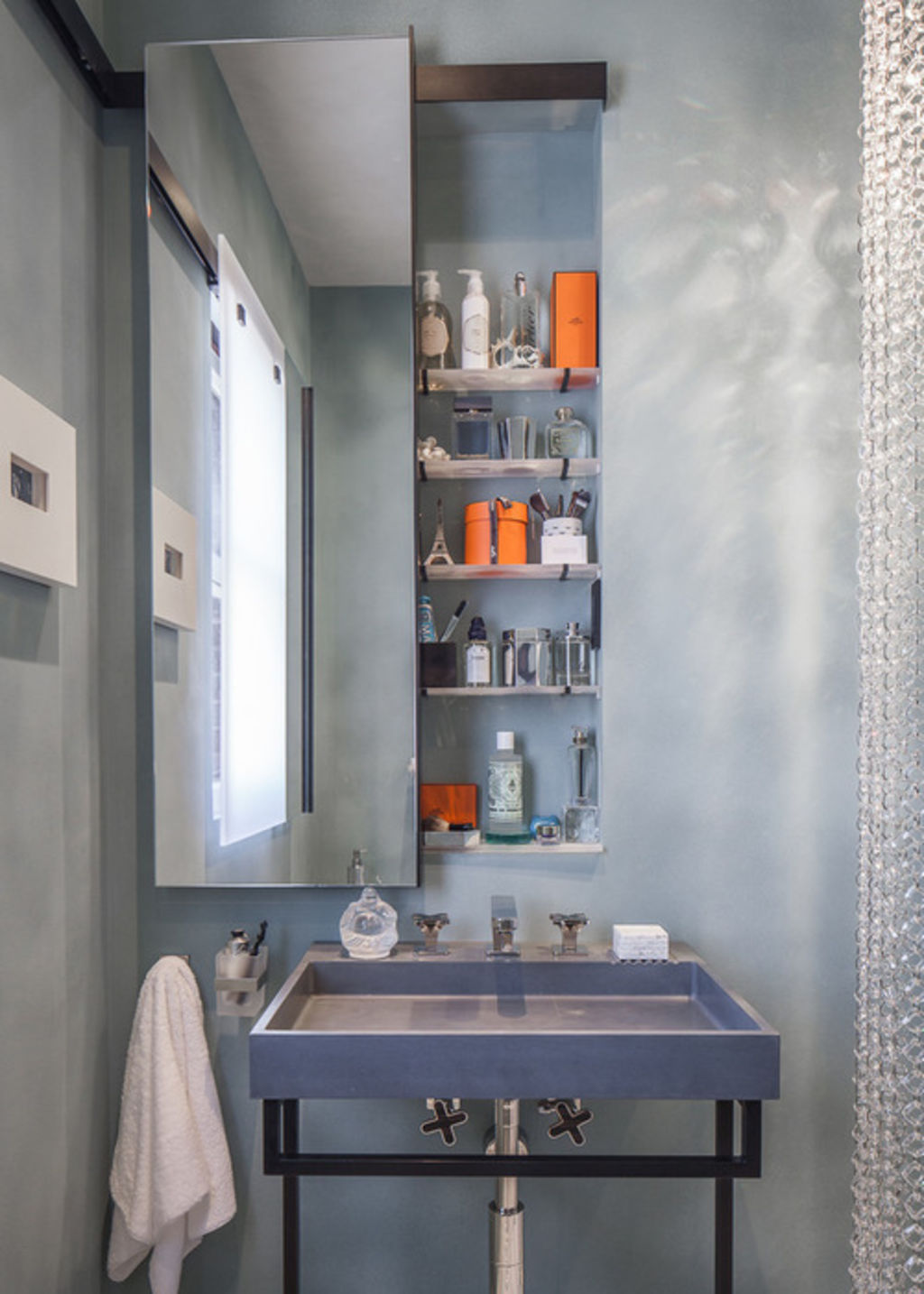Household items you need to purge from your home, stat

Contemporary Bathroom by Alfredo Gregory Design
Author: Natasha Saroca
When was the last time you replaced your dish sponge or pillow? Or checked your vanity for out-of-date medicines or grooming products? While it’s tempting to continue using items like these well beyond their expiry date or until they fall apart, holding on to stuff that’s old, skungy or damaged not only creates unnecessary clutter but may affect your health and the safety of your home, too. Below we’ve compiled a list of common household items that you should get rid of right now, as well as some guidelines on how often they need to be replaced for future reference.
So, what are you waiting for? Grab a bin and recycling bag and start culling your way to a happier and healthier home.
1. Lingering leftovers
Are you a bit lax when it comes to throwing leftovers out? If so, then you need to clean up your act. According to Australia’s Food Safety Information Council, leftovers that have been refrigerated should be eaten within two or three days, as the risk of food poisoning increases if the dish is consumed after then. If you don’t think you’ll eat the leftovers within that time frame, pop the food in the freezer instead, as it will keep for three to four months.

2. Nasty toilet brushes
While toilet brushes are an essential bathroom-cleaning tool, they’re pretty … well … gross. It goes without saying that these bad boys should be replaced fairly regularly – every six months is a good rule of thumb. However, this obviously depends on how often and vigorously you use it. You can extend the life of your toilet brush by disinfecting the bristles and holder after each use.
Bathroom designs to suit every style
3. Pillows aged two years and up
If you put your pillow under a microscope, I have a feeling that you’d be pretty grossed out by what you find. Dead skin cells, bodily fluids, dust mites (and their droppings), mould and other microscopic bacteria and bugs – all of which can cause health problems and poor sleep – are just some of the nasties commonly found hanging out on top of and inside your pillow. Disgusting, right?
According to America’s National Sleep Foundation, you should replace your pillows every 18 months. Using pillow protectors and washing your pillows on a delicate cycle every three months will extend their life and keep them clean(er) until it’s time to replace them.
Browse a range of home decor products
4. Expired medicines and vitamins
According to a 2012 study conducted by NPS MedicineWise, a government-funded medicine information service for Australian health professionals and consumers, one in five Australians have taken out-of-date medicine before. This is a worrying trend as most medicines deteriorate over time and can become less effective or even toxic once their expiration date has past. An obvious solution is to regularly go through your medicine cabinet and remove any pills, capsules, liquids and ointments that have expired. Rather than tossing the medicines in the bin or flushing them down the toilet, return them to your local pharmacy for safe and easy disposal.
5. Old tax-time paperwork
The Australian Taxation Office only requires you to keep your receipts, group certificates, log books and other written evidence to support your tax claim for five years from the date you lodged your return. If you’re like me and have a decade’s worth of tax-time documents stashed in your home office, take some time to sort through the paperwork, shred the confidential documents that you no longer need and get your tax record filing system set-up in preparation for the financial year.

6. Hacked-up chopping boards
Is your cutting board warped, chipped, cracked, stained or deeply scarred? Then it should be put on the chopping block. Battered and badly scratched prep surfaces are the perfect breeding ground for harmful bacteria, as moisture, food particles and run-off juices can seep into or accumulate in the dents and grooves and transfer to other foods. When shopping around for a new cutting board, consider opting for colour-coded boards to prevent cross contamination or flexible boards that you can easily disinfect in the dishwasher or microwave.
7. Poor-performing smoke alarms
While you may think that having any old smoke alarm will do, there’s one type that tops the rest. According to Fire & Rescue NSW, dual sensor alarms with photoelectric and ionisation detectors are the best choice for homes, so you should consider replacing your existing alarms with these high-performing systems. While photoelectric sensors respond faster to dense smoke and smouldering fires, ionisation sensors are good at detecting fast-flaming fires that don’t produce a lot of smoke. When combined in one unit, these alarms offer the ultimate protection for your family. Once you’re upgraded to dual sensor smoke alarms, Fire & Rescue NSW recommends that you replace them every 10 years.

8. Scratched non-stick pans
Replace any non-stick pots and pans that are scratched, chipped or flaking, stat. The reason why is that the non-stick coating used on some cookware is made from harmful chemicals, including polytetrafluoroethylene (PTFE) and perfluorooctanoic acid (PFOA), which can leach into your food if the coating is damaged. These toxins can cause health problems – including liver damage, immune system disorders and headaches – and harm the environment, too.
Where to put your pots and pans
9. Sad, soiled or saggy mattresses
According to the National Sleep Foundation, mattresses have an average lifespan of eight to 10 years, so if yours is pushing double digits, it may be time to trade it in.Obviously, if your mattress is lumpy, saggy, stained, mouldy or causes back pain or poor sleep, these are signs that you should go mattress shopping, too.
10. Manky toothbrushes
The Australian Dental Association recommends that you replace your toothbrush every two to three months. If you don’t, the bristles of your toothbrush may become frayed and worn, which means they won’t remove plaque, tartar and germs properly, leaving you more vulnerable to tooth decay and gum disease.

11. Ancient electronic gadgets
There’s no point holding onto old-school gadgets like VCRs, boxy analog TVs, outdated desktop computers and brick-like mobile phones if they’re broken or have been cast aside for newer models and are just taking up precious real estate in your home. Before you say it, no, you probably won’t ever use them again, nor will they ever become collector’s items, so it’s time to let them go. To dispose of your old electronics, contact e-waste disposal organisations like Mobile Muster or Tech Collect, or your local council to find out when and where to drop them off. If the gadgets still work, consider donating them to a charity or community organisation instead.
Find inspiration from thousands of home office designs
12. Out-of-date beauty and grooming products
Expired beauty and grooming products can irritate the skin and cause infections, so be sure to throw them out as soon as they reach their use-by dates. As a general rule, you should get rid of your mascara and liquid eyeliner after three months, and moisturisers (including sunscreen) after six months. Lipstick, gloss, lip and eyeliner pencils, blush, eyeshadow, foundation and fragrances can last up to two years.
Sometimes a product’s shelf life is printed on its packaging. Look for an open jar symbol with a number and ‘M’ printed on it – this tells you how many months you can use the product for after opening.
13. Gnarly dish cloths and sponges
According to research conducted by the global Hygiene Council, more than one third of dish cloths and sponges contain the harmful bacteria E. coli, which can cause food poisoning. If this dirty secret doesn’t spur you into action and convince you to bin your manky dish cloth or sponge right now, I don’t know what will! You should change your kitchen sponge at least once a month or sooner if it starts to smell. Remember to disinfect it regularly to prevent the spreading of germs.
We recommend
States
Capital Cities
Capital Cities - Rentals
Popular Areas
Allhomes
More







